
 F RONTISPIECE : Dutch ships of the seventeenth century are visually recorded in greater numbers and to higher standards of accuracy than any maritime subject before the advent of photography. This reflects the importance of the sea and shipping to the Netherlands, which produced a market for paintings, drawings and engravings that was buoyant enough to support some of the finest artists of the day indeed, some of the finest marine artists of all time. The more famous ships were depicted often and by different artists, which provides a crosscheck on the accuracy of the appearance details represented. As an example, this painting by Jeronimus van Diest takes as its main subject the Eendracht , the Dutch fleet flagship blown up at the Battle of Lowestoft in 1665. The careful depiction of her stern decoration closely matches detail known from a number of drawings by the Van de Veldes, the father and son team who did more to record the appearance of the ships of this era than any other artists. Thanks to their huge and meticulous output, the precise visual features of many ships are known, and can be used to identify otherwise anonymous vessels in other works.
F RONTISPIECE : Dutch ships of the seventeenth century are visually recorded in greater numbers and to higher standards of accuracy than any maritime subject before the advent of photography. This reflects the importance of the sea and shipping to the Netherlands, which produced a market for paintings, drawings and engravings that was buoyant enough to support some of the finest artists of the day indeed, some of the finest marine artists of all time. The more famous ships were depicted often and by different artists, which provides a crosscheck on the accuracy of the appearance details represented. As an example, this painting by Jeronimus van Diest takes as its main subject the Eendracht , the Dutch fleet flagship blown up at the Battle of Lowestoft in 1665. The careful depiction of her stern decoration closely matches detail known from a number of drawings by the Van de Veldes, the father and son team who did more to record the appearance of the ships of this era than any other artists. Thanks to their huge and meticulous output, the precise visual features of many ships are known, and can be used to identify otherwise anonymous vessels in other works.
Given the richness of the pictorial record, the paucity of surviving documentation about the ships themselves is a surprising contrast. Bureaucratic complexities and the destruction of archives have conspired to make even compiling a complete navy list for the golden age of the Netherlands an impossible task, but the book which follows is the first concerted attempt to summarise all that is currently known about the Dutch warships of the 16001714 period. National Maritime Museum BHC3307 Copyright James Bender 2014
Introduction J D Davies 2014 First published in Great Britain in 2014 by
Seaforth Publishing
An imprint of Pen & Sword Books Ltd
47 Church Street, Barnsley, S Yorkshire S70 2AS www.seaforthpublishing.com
Email: info@seaforthpublishing.com British Library Cataloguing in Publication Data
A CIP data record for this book is available from the British Library ISBN 978 1 84832 157 1
eISBN 9781473852877 All rights reserved. No part of this publication may be reproduced or transmitted in any form or by any means, electronic or mechanical, including photocopying, recording, or any information storage and retrieval system, without prior permission in writing of both the copyright owner and the above publisher. The right of James Bender to be identified as the author of this work has been asserted in accordance with the Copyright, Designs and Patents Act 1988 Typeset and designed by Ian Hughes, Mousemat Design Limited Printed and bound in China
C ONTENTS
P REFACE
This book reflects the results of studying since 1990 the navies and warships involved in the Anglo-Dutch Wars, with a focus on the Dutch navy and warships in the First Anglo-Dutch war. As my study progressed, I gradually realized that there were no books about the Dutch navy and warships in the First Anglo-Dutch War that included the details that I wanted to see.
The primary published source for Dutch ship data is Ships of the United Netherlands 1648-1702 by A Vreugdenhil, dating from 1938 (see , below). Vreugdenhils list has long been the primary source for the names and dimensions of Dutch warships in the latter half of the seventeenth century. There are many errors in this pioneering work, although it is still the best published source. His information about Zeeland ships that were discarded in 1648 to 1649 is accurate, although he did not have the details that are available from the Zeeuws Archief. As we learned more, the inaccuracies in Vreugdenhils list about ships that served in the First Anglo-Dutch War became obvious. For that period, Vreugdenhil had quite obviously depended heavily on the Staat van Oorlog te Water (a regular report on the state of naval forces) for the year 1654, and on published sources, such as the work of Dr Elias in Schetsen uit de Geschiedenis van Ons Zeewezen , the monthly Hollandsche Mercurius for 1652 and 1653, and the book Onstelde-Zee , published in 1654.
He also relied overmuch on Dr Ballhausens book for information. While Dr Ballhausen had made an extensive review of the published literature at the time he researched his book, his ship lists are so inaccurate that they should be ignored. Fortunately, Vreudenhils notes survive and have been corrected and annotated over time. They are preserved for study, and are useful despite their shortcomings. The best sources of information about details of the equipping of the Dutch navy in the First Anglo-Dutch War are two books by Dr Johan E Elias: Schetsen uit de Geschiedenis van ons Zeewezen and De Vlootbouw in Nederland . The old classic, Volume I of J C De Jonges Geschiedenis van het Nederlandsche Zeewezen is too general and lacks specifics.
The best part of volume one are the two lists, one from March 1653, and the list of ships for 1654, based on theStaat van Oorlog te Water. Dr Elias apparently wrote Schetsen uit de Geschiedenis van Ons Zeewezen to provide a survey of archival sources that were not used by De Jonge. Because of the broad scope of Dr Eliass work, he omits most detail, but still manages to provide data about ships and captains in the First Anglo-Dutch War that have not been otherwise seen. From Dr Elias I learned that the list of ships of the Admiralty of Rotterdam for 26 February 1652 existed and that the dimensions were in Maas feet, not Amsterdam feet. One of the most disconcerting aspects of Dutch warships from the seventeenth century is the amount of uncertainty involved. To deal with that issue the approach taken here is to provide information with the dates it was recorded so that the informed reader can make their own decisions.
In the past it was often assumed that the Staat van Oorlog te Water for the year 1654 was the ultimate authority and to use the dimensions given there. The problem with that is that some of the figures quoted there are easily refuted, so which ones are correct and which are wrong? We are also confronted with the confusion with ship names caused by there being multiple ships of the same name in simultaneous service with different admiralties; there are even cases where ships of the same name served in the same admiralty at the same time. What follows is my best attempt to clarify these issues, based on a quarter of a century of research. James Bender June 2014
A CKNOWLEDGEMENTS
Since the late 1990s I have had the distinct pleasure and honour to have advice and information from Frank Fox, the expert on seventeenth-century English warships. I was fortunate to visit him in his home and was able to see some of his vast book and artefact collection. I am greatly indebted to the late Jan Glete, who provided my initial leads about where to look in the Nationaal Archief for information about Amsterdam Directors ships.
He also very kindly provided me with copies of his notes and pages from various sources that had Dutch ship specifications. Jan Glete also helped me communicate with the Riksarkivet to get scans of Witte de Withs journals and letter book that were taken off the Brederode before the ship sank. The former Dutch ambassador to Sweden, Antoine van Dongen, was the one who told me about Witte de Withs papers being in Sweden. I had helped him in a small way with information about Witte de With and Dutch ships for a speech he was to give. I owe a great debt to Carl Stapel for having access to his great knowledge and his information about Dutch warships, the Dutch navy, and Dutch naval officers in the seventeenth century. I first learned of Ron van Maanen from Jan Glete.


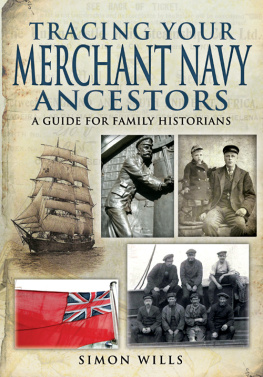
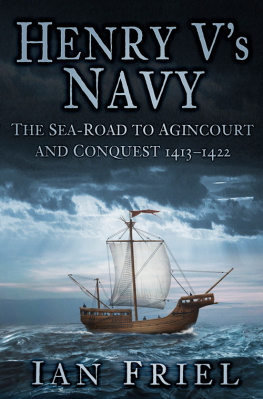

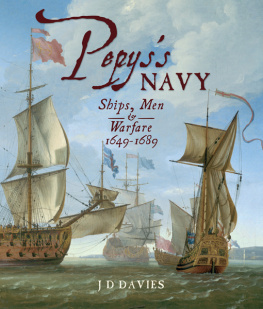
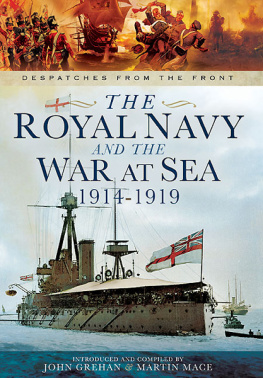
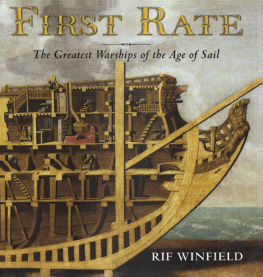


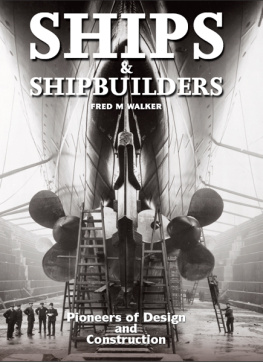
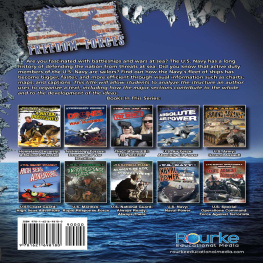
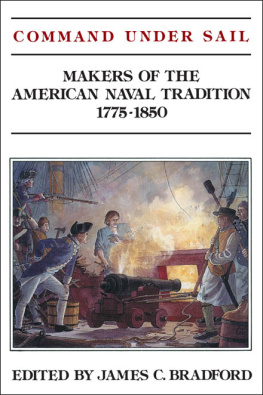

 F RONTISPIECE : Dutch ships of the seventeenth century are visually recorded in greater numbers and to higher standards of accuracy than any maritime subject before the advent of photography. This reflects the importance of the sea and shipping to the Netherlands, which produced a market for paintings, drawings and engravings that was buoyant enough to support some of the finest artists of the day indeed, some of the finest marine artists of all time. The more famous ships were depicted often and by different artists, which provides a crosscheck on the accuracy of the appearance details represented. As an example, this painting by Jeronimus van Diest takes as its main subject the Eendracht , the Dutch fleet flagship blown up at the Battle of Lowestoft in 1665. The careful depiction of her stern decoration closely matches detail known from a number of drawings by the Van de Veldes, the father and son team who did more to record the appearance of the ships of this era than any other artists. Thanks to their huge and meticulous output, the precise visual features of many ships are known, and can be used to identify otherwise anonymous vessels in other works.
F RONTISPIECE : Dutch ships of the seventeenth century are visually recorded in greater numbers and to higher standards of accuracy than any maritime subject before the advent of photography. This reflects the importance of the sea and shipping to the Netherlands, which produced a market for paintings, drawings and engravings that was buoyant enough to support some of the finest artists of the day indeed, some of the finest marine artists of all time. The more famous ships were depicted often and by different artists, which provides a crosscheck on the accuracy of the appearance details represented. As an example, this painting by Jeronimus van Diest takes as its main subject the Eendracht , the Dutch fleet flagship blown up at the Battle of Lowestoft in 1665. The careful depiction of her stern decoration closely matches detail known from a number of drawings by the Van de Veldes, the father and son team who did more to record the appearance of the ships of this era than any other artists. Thanks to their huge and meticulous output, the precise visual features of many ships are known, and can be used to identify otherwise anonymous vessels in other works.